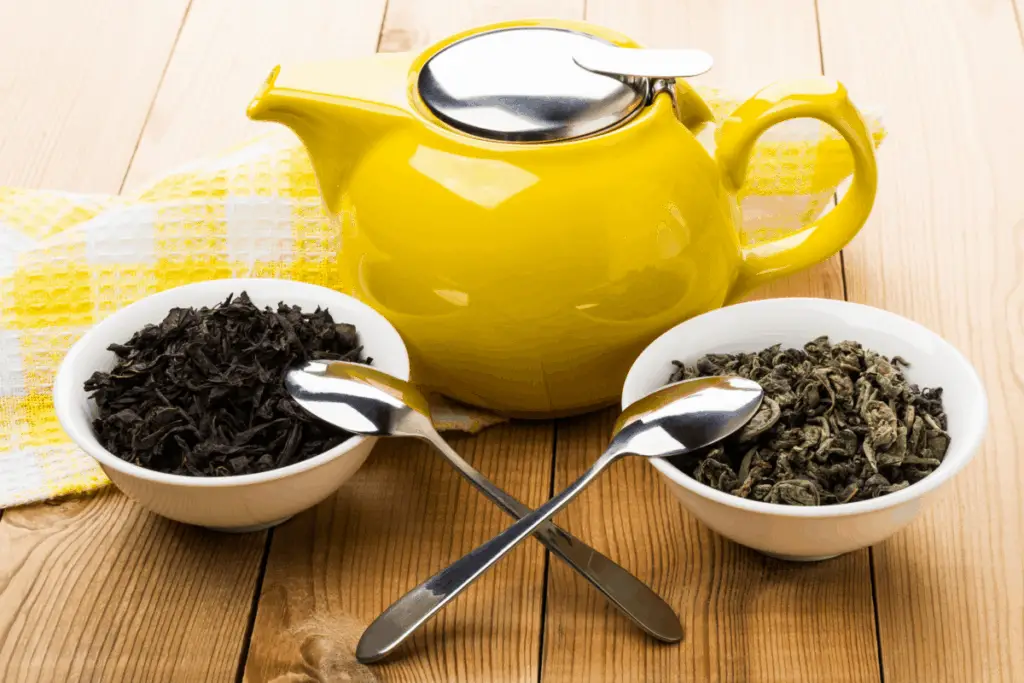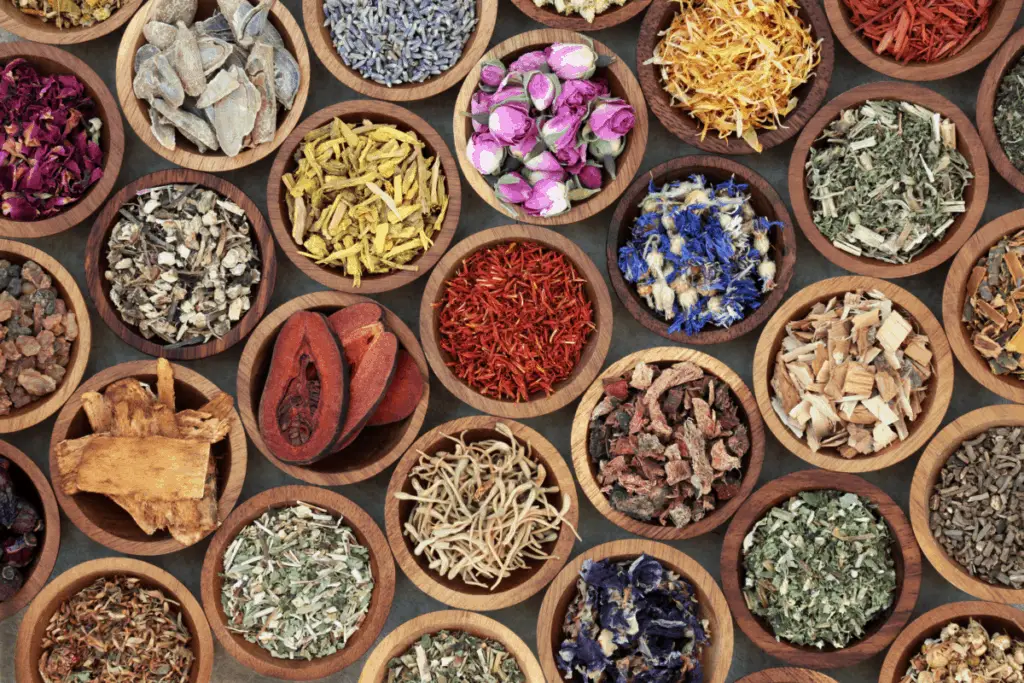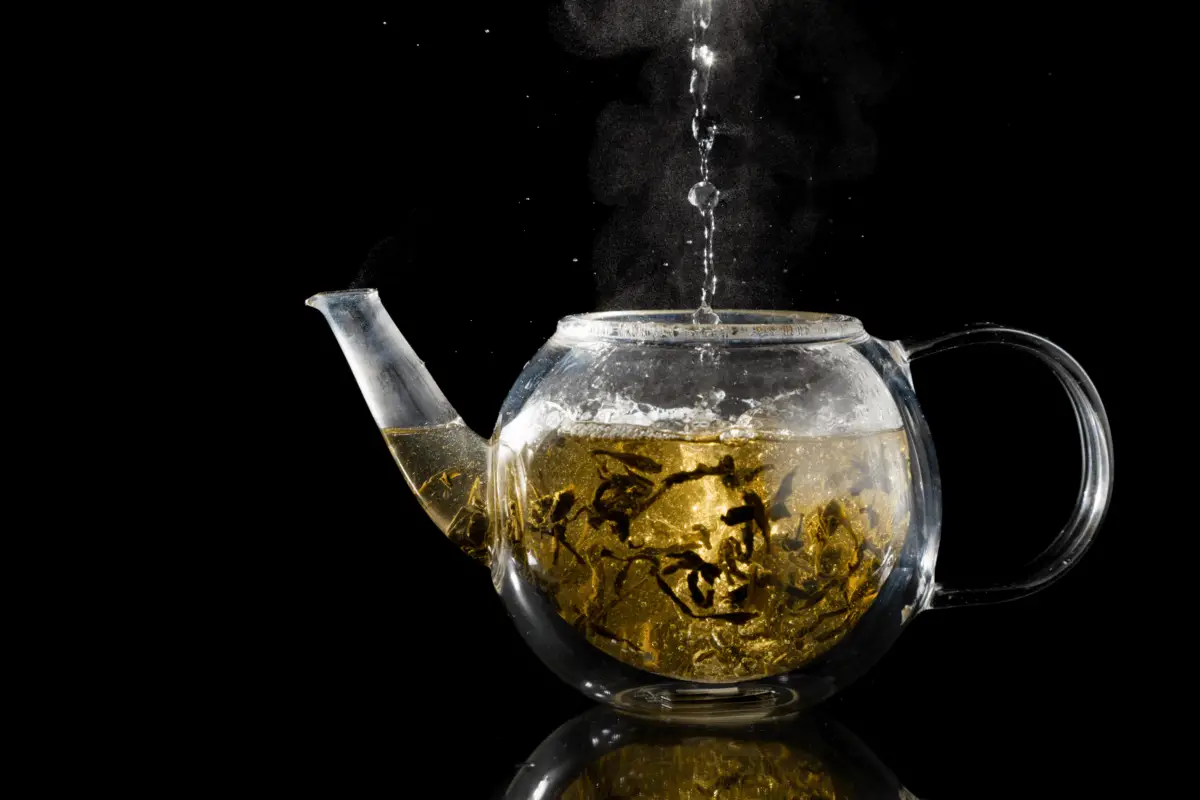Tea is the second-most popular beverage on the planet, second only to water. It is estimated that we humans consume over 2 billion cups of tea around the world each day. Despite its enormous popularity, tea brewing is widely misunderstood, particularly proper water temperature. The average tea drinker either does not know proper brewing temperatures or does not believe it is important enough to learn. Let’s change that.
Generally speaking, black and oolong teas steep well at 85° C (185° F), white and green teas offer best results at 70° C (158° F), and many herbal tea infusions can tolerate 100° C (212° F). Realistically, there is over a 30-degree variance in the range of ideal water temperature for the various types of teas.
Tea has been enjoyed for thousands of years in Asia and centuries in Europe. In the UK, it is interwoven into British culture, where it is affectionately known as a cuppa. Deeply ceremonial teas are common in Latin America, and flower teas have their root in revolutionary America.
And yet, all around the world, tea is brewed with water that is either too hot or too cool, resulting in bitter brews and flavorless cups.
As I mentioned above, over 2 billion people drink tea at least once each day. I’m guessing that some tea drinkers are more educated on optimal steeping temperatures than others. I count myself in the “always learning” category.
In an effort to benefit those of us still perfecting our own tea-steeping art, this article explains how to brew tea with the correct water temperature every time.
You may also want to read my article Can You Steep Tea Bags in Cold Water? Tips & Steps.
Black and oolong teas steep well at 85° C (185° F), white and green teas offer best results at 70° C (158° F), and many herbal tea infusions can tolerate 100° C (212° F). Realistically, there is over a 30-degree variance in the range of ideal water temperature for the various types of teas.”
TEA CROSSING
A Few Words About Tea: The Essentials
Understanding the crucial role that water plays in tea brewing requires a basic understanding of what tea is, where it comes from, and how brewed tea gets its unique flavor.
Pure teas are the processed leaves of the tea plant, Camellia sinensis, which grows primarily in tropical and mountainous areas of Asia, select areas of the Middle East and Eastern Europe, and parts of Africa.
There are two varieties of the tea plant that are responsible for the world’s tea production:
- Camellia sinensis var. sinensis, which has origins in China and has been brewed by the Chinese for thousands of years; and
- Camellia sinensis var. assamica, which was discovered growing wild in the foothills of India.

Six primary types of teas are brewed around the globe:
- White teas
- Yellow teas
- Green teas
- Oolong teas
- Black teas
- Fermented teas (pu’erh)
What differentiates one type of tea from another is mostly determined by the degree of oxidation that the tea leaves have gone through, with no oxidation (white and yellow teas) at one end of the spectrum and full oxidation (black teas) at the other. (The six teas above are listed by their degree of oxidation.)
Green teas undergo minimal oxidation, which is partly why its leaves retain their greenish color. Oolong teas are unique in that they typically go through several rounds of oxidation, with each session imparting another layer of flavor.
In a category all by itself are the highly prized Pu’erh teas, which are the only type that undergoes real fermentation and are commonly sold in compressed patties or bricks.
You may want to read my article Is Tea Fermented or Oxidized? And What’s The Difference?
Where Does Tea’s Flavor and Characteristics Come From?
Tea leaves, like many other plant species, contain unique compounds that are part of its natural defenses against pests, diseases, and other threats to its well-being.
These substances are known as polyphenols, and they are primarily responsible for the unique attributes of tea, including its pleasant aroma, inviting color, and complex flavor profile, not to mention its purported health benefits.
Polyphenols are found throughout the edible plant kingdom, and fortunately for humans, they can contribute desirable characteristics such as flavor and color, when processed and eaten. Examples of polyphenols at work include the astringency found in the skin of wine grapes, the bitterness of grapefruit, and the red color of many types of berries.
There are over 500 types of polyphenols that have been identified in plants.
In the case of tea, there are a host of compounds other than polyphenols that account for its unique attributes. Bear in mind that some of these are more prevalent in certain types of teas than others, due to the different ways that teas are processed.

Here are the prominent compounds and substances found in tea that give it its highly sought flavor and characteristics:
- Polyphenols – Found in great abundance in tea leaves and accounting for up to 30% of their dry weight. Polyphenols include chemicals known as flavonoids, which play a significant role in the desirable characteristics of tea, including its aroma, flavor, and color. Teas that undergo little to no oxidation retain more of their polyphenols, while oxidized teas contain more theaflavins and thearubigins.
- Amino acids – Often referred to as essential building blocks for the human body, amino acids are necessary nutrients. Tea contains an amino acid known as L-theanine, which has been found to possess relaxing qualities with positive effects on specific brain functions. In conjunction with naturally occurring caffeine, L-theanine creates a state affectionately referred to as wakeful relaxation.
- Caffeine – A naturally occurring substance that is also found in other plants such as coffee and cacao. Caffeine is a stimulant and, in moderate amounts, can create a sense of alertness and energy. The caffeine content in a cup of tea is less than an equivalent serving of coffee. Nevertheless, depending on the tea type and steeping time, caffeine content per cup can range from as little as 6 mg (white teas) up to 110 mg (black teas).
- Vitamins and minerals – Tea leaves naturally contain a host of essential vitamins and minerals in varying amounts. Vitamins found in tea include Vitamin C, carotene, thiamine (Vitamin B1), Vitamin B6, and folic acid. Minerals include manganese and potassium. Interestingly, tea leaves are one of only a few plants containing naturally occurring fluoride, which promotes healthy teeth and gums.
Many of these chemicals and compounds are considered antioxidants by the scientific and well-being communities, which is why tea is revered by many as a beverage that is not only richly satisfying but also promotes a healthy lifestyle.
In particular, the high presence of polyphenols, and more specifically catechins, are believed by many to have widespread health benefits.
How Does Water Temperature Affect Tea Brewing? Understanding the Science
Ask the average tea drinker whether the water temperature is essential to achieving a proper cup of tea, and chances are you will get an emphatic yes. Ask them to explain why that is, and they will likely be at a loss for words.
A full appreciation of the importance of brewing tea with properly heated water requires a basic understanding of a few scientific concepts.
Water is considered to be a universal solvent, meaning it is very good at dissolving things. No other liquid can dissolve substances like water can, which is why it is the primary ingredient in tea.
Water can dissolve compounds, including the ones present in tea, which are responsible for its prized characteristics that transform water and tea leaves into a smooth, satisfying beverage.
By most estimates, brewed tea is 98% water and 2% compounds that have been removed and extracted from the tea leaves.

Here is the basic process:
- As water is heated, the increasing kinetic energy among the water molecules enables them to more effectively dissolve various soluble compounds in the tea leaves as they steep.
- The hotter the water, the faster the rate that tea compounds are being dissolved and carried away from the cellular structure of the leaves.
What is important to remember is that not all of the compounds in tea leaves dissolve at the same rate, nor is there a catch-all temperature at which all of the different types of teas will produce a quality cup.
The fact is, the right temperature for brewing delicate white or yellow teas is not hot enough for black teas to brew correctly.
And the reverse is true – water suitable for brewing black or oolong teas is far too hot for brewing green, yellow, or white teas.
It is, therefore, important to be mindful of what type of tea you are brewing and knowing the correct temperature range for that particular selection.
“Mastering the art of tea brewing boils down to knowing a few essentials.”
TEA CROSSING
Proper Water Temperatures and Techniques for Brewing Different Types of Tea
There are six major categories of teas, as previously listed, and each has its ideal brewing methods to draw out unique characteristics and flavors.
Brewing techniques that result in a perfectly extracted black tea would not produce a similar result with a green tea. Similarly, you would not want to use white tea brewing techniques to prepare an oolong or Pu’erh tea.
The differences in brewing techniques among various tea types are perhaps no more pronounced than when it comes to water temperature.
There is over a 30-degree variance in the range of ideal water temperature for the various types of teas.
Contrary to a common misperception, water that has achieved a rolling boil is never to be poured on any type of tea leaf – it is simply too hot and will end up cooking or scalding the leaves.
Here are recommended water temperatures and brewing procedures for the six major tea categories:
Black Tea
Black teas are called such because of the dark color of their leaves, which become so through oxidation. Black teas are more prevalent in the Western world, mainly Europe, where their robust, bold, full-bodied, and astringent qualities are so widely embraced as to become an intricate part of daily life for millions of tea drinkers.
Because of the full oxidation process that black teas have gone through, they are steeped at the highest temperatures and for the most extended periods.
It is worth noting that due to the longer infusion time associated with black teas, they have the highest caffeine content of the six major types of teas. They also contain the highest levels of tannins, which are widely considered beneficial for their antioxidant qualities.

These are the essential steeping recommendations:
- Recommended Water Temperature: 100° C (212° F) – just off the boil
- Recommended Tea Amount (Weight): 1 full teaspoon per 239 to 296 ml (8 to 10 fluid oz) of water
- Recommended Steeping Time: 5 minutes (adjust to personal preference)
Pro Brewing Tips
Because they brew at higher water temperature and steep for a more extended period, proper thermal regulation is essential for black teas. Ceramic or porcelain teapots will minimize heat loss during brewing, especially if they have been pre-heated before brewing (filling with hot water which is poured out just before brewing).
Unlike more delicate teas like the white and yellow varieties, hot water can be poured directly over black tea leaves. It is crucial to remove the leaves from the teapot after the steeping period. Otherwise, the leaves will continue to release compounds such as caffeine and tannins, which can make the tea overly bitter and astringent.
Oolong Tea
This category of teas produces very complex brews, with layers of flavor and sublime qualities throughout. Much of this depth and complexity can be attributed to the laborious processing methods of producing oolong teas, which can involve multiple rounds of oxidation and firing, each imparting a different layer of flavor.
Oolong teas are more a range of teas than a type, simply because they can be anything from more oxidized than green tea to anything less oxidized than black tea.
Put another way, the oxidation of oolongs can range from 20% to 80% (sometimes more). Thus, their flavor profile can be similar to green teas but with more depth and roastiness or similar to black teas but with less astringency, milder flavor, and less body.

These are the essential steeping recommendations:
- Recommended Water Temperature: 85° C to 95° C (185° F to 203° F) – remove water from the heat source before bubbles form
- Recommended Tea Amount (Weight): Depends on the type of oolong tea but start with 1/4 of the teapot
- Recommended Steeping Time: After initial washing, 30-50 seconds for initial steeping, and longer for subsequent infusions
Pro Brewing Tips
The typical oolong tea brewing kit consists of an earthenware teapot for steeping, a separate pot for serving, and cups for drinking.
Once brewed tea is transferred to the serving pot, cups are arranged next to each other, and tea is poured from the serving pot in a single motion across all the cups to ensure each one receives tea of equal brew strength.
The very first infusion is not for drinking, but rather, to wash the leaves and “awaken” them for brewing (it is therefore discarded). Starting with the second infusion, most oolongs can be steeped five to eight times before losing their flavor.

Green Tea
This is the most widely consumed category of tea as far as the number of cups brewed per day and may very well have the best reputation as far as perceived health benefits. When it comes to brewing green teas, methods are similar for the different varieties, but a distinction is made between teas harvested in the spring and those harvested post-spring.
Because they are minimally oxidized, green teas retain much of the leaves’ polyphenols, which among other things, consist of antioxidants that have many purported health benefits.
As far as flavor profile, green teas are generally savory, with an assortment of fruity, vegetal, grassy, nutty, and floral notes depending on the particular variety, processing methods, and country of origin.

These are the essential steeping recommendations:
Spring Harvest Green Teas
- Recommended Water Temperature: 70° C to 82° C (158° F to 180° F) – also known as “column of steam steadily rising” water
- Recommended Tea Amount (Weight): For Chinese green teas, use 2 teaspoons (2 grams) to 2 tablespoons (3 grams) per 177 ml (6 fluid oz) of water.For Japanese green teas, use 1-1 ½ teaspoons (2 grams) to 2-3 teaspoons (3 grams) per 118 ml (4 fluid oz) of water.
- Recommended Steeping Time: 2 minutes for the initial infusion (then adjust to taste)
Post-Spring Harvest And Jasmine Green Teas
- Recommended Water Temperature: 79° C to 85° C (175° F to 185° F) – also known as “fish eyes” water (large bubbles)
- Recommended Tea Amount (Weight): For Chinese green teas, use 2 teaspoons (2 grams) to 2 tablespoons (3 grams) per 177 ml (6 fluid oz) of water.For jasmine green teas, use 1 ½ teaspoons to 1 ¼ tablespoons per 177 ml (6 fluid oz) of water.
- Recommended Steeping Time: For green teas, 2 minutes for the initial infusion (then adjust to taste). For jasmine teas, 2 to 4 minutes for the initial infusion, adjusting for the preferred intensity of aroma (shorter infusion for more aroma, longer infusion for less aroma).
Pro Brewing Tips
More than any other tea category, brewing green tea can seem to be very ceremonial, which is true given its rich, long history. It is often said that the first infusion is to be sipped, then re-sipped every 30 seconds to enjoy a tea “that is new to you,” meaning that new layers of flavor are revealed over time and with each subsequent infusion.
Most Chinese green teas can be steeped two to three times, often with hotter water each subsequent brew.
(Japanese green tea re-infusions are often made with cooler water.) Jasmine teas can be re-steeped, but aroma loss will be significant with each subsequent infusion.
Yellow Tea
This type of tea gets its moniker from the deep amber, liquor-like hue of the brew. Yellow was the color associated with Chinese emperors, and as such, yellow teas are still held with the highest regard and esteem in China and throughout the tea-drinking world.
It is also the rarest of all teas with minimal production each year and, therefore, commands very high prices.
Yellow teas have a delicate and floral flavor profile, with a subtle fruitiness. A cup of yellow tea has a pleasant sweetness that lacks the grassiness often found in green teas.
In recent years, yellow teas have become the darlings of well-being advocates, who tout its abundance of polyphenols and correlating antioxidant properties as being even healthier than green teas.

These are the essential steeping recommendations:
- Recommended Water Temperature: 75° C to 85° C (167° F to 185° F)
- Recommended Tea Amount (Weight): 1 heaping teaspoon per teapot (they typically hold around 625 ml or 21 fluid oz of water)
- Recommended Steeping Time: 3 minutes – covered
Pro Brewing Tips
Because of the relatively low brewing temperature used for yellow teas, there is not as much of a premium on thermal regulation; therefore, glass teapots are perfectly suitable for these rarest of teas.
Being able to watch the tea leaves unfurl during steeping, and the yellow liquor develop, only enhances the experience of drinking yellow tea.
Certain yellow teas can be infused from three to six times, with each additional steeping past the first one requiring an additional 30 seconds of infusion than the one before.
White Tea
Along with yellow teas, white teas are the least oxidized of the six major types of tea. As such, they present a gentle, floral quality with a sweet aroma and light-bodied goodness. The soft, fruity flavor profile of white teas come from the young leaves (the top two only) and buds that are picked while they still have their white downy coat.
Although their availability is more widespread than yellow tea, white teas still command high prices due to their limited production and costly harvesting (they are plucked by hand) and processing methods.
Two white teas are particularly renowned for their quality and flavor: silver needle, which consists of the pointy buds only and presents the more refined, delicate flavor, and white peony, which comprises the bud and the first few newly formed leaves of the plant and is slightly stronger when brewed.

These are the essential steeping recommendations:
- Recommended Water Temperature: Maximum 77° C (177° F)
- Recommended Tea Amount (Weight): For silver needle, 2 teaspoons. For white peony, use 2 tablespoons.
- Recommended Steeping Time: 1 to 5 minutes depending on your personal preferences (sip at the one-minute mark and then sample at 30-second intervals until it tastes just right to you)
Pro Brewing Tips
Pre-heat your brewing vessel and serving cups before brewing and drinking to ensure maximum enjoyment of this delicate tea. Brewing water should never be poured directly over the leaves as that may damage them and produce a sub-par result.
Pu’erh Tea
As the only type of tea that is genuinely fermented (as opposed to just oxidized), Pu’erh teas not only offer unique flavors, but care must be given to how they are brewed to draw out their prized characteristics.
It should be noted that Pu’erh teas are formed into compressed rings or bricks, so the leaves must be carefully picked off without breaking them.
There are two forms of Pu’erh teas, raw aged and ripe. Raw Pu’erhs exhibit a woody, pungent, and earthy flavor profile with hints of mushroom. They are also quite floral to the nose and tongue. Ripe Pu’erhs are more mellow, with a smoky, savory, and vegetal flavor profile.
These are the essential steeping recommendations:
- Recommended Water Temperature: 95° C to 100° C (203° F to 212° F)
- Recommended Tea Amount (Weight): 6 grams (less than 1/4 oz) of tea per 100 ml (3.4 fluid oz) of water (or fill the teapot 1/4 full with tea leaves)
- Recommended Steeping Time: 20 seconds or less per infusion, after initial washing and priming
Pro Brewing Tips
The first one to two infusions of Pu’erhs are not meant to be consumed, but rather, to wash the leaves and prime them for when the real brewing begins. By the third infusion, the tea can be consumed with gradually increasing infusion times for each subsequent brew.
Incredibly, some Pu’erh teas can be steeped up to 20 times before the flavor in the leaves is exhausted.
Brewing Herbal Teas
Aside from pure teas brewed from the leaves of Camellia sinensis, there are other “teas” that are very popular, either for their relaxing and soothing characteristics or for their flavor.

These are commonly referred to as herbal teas or tisanes, and they typically comprise flowers, stems, roots, seeds, and fruit.
You may want to read my article Is Fruit Tea a Real Tea? Infusion? Tisane? A Full Guide.
Popular examples of herbal teas include chamomile, peppermint leaves, rooibos, herbs, and several buds and flowers. Two or more of these are often blended to create refreshing herbal infusions for brewing.
As with pure teas, proper water temperature is essential to preparing a quality cup.

These are the essential steeping recommendations:
- Recommended Water Temperature: Rolling boil (> 212° F)
- Recommended Tea Amount (Weight): 1 teaspoon of flowers/leaves/herbs per cup, plus 1 teaspoon for the teapot
- Recommended Steeping Time: 5 minutes minimum (up to 10 minutes)
Pro Brewing Tips
Unlike pure teas, herbal teas will not produce bitterness if over-steeped.
They may, however, produce other off-flavors native to the particular flower or herb used.
If seeking a more robust, more intense cup, it is recommended to start with more flowers/leaves/herbs, rather than infusing for a more extended period.
Mastering the art of tea brewing boils down to knowing a few essentials about the particular type of tea you enjoy drinking, starting with learning the right temperature for the brewing water.
With a few tidbits of knowledge, you can elevate your tea brewing game, and reward yourself with perhaps the best cup you have ever enjoyed, with the satisfaction of preparing teahouse quality brew in the comfort of your kitchen.

